Columns
Bringing more women into science
Female scientists can now pursue their careers, but their role as caregivers represents a double burden.
Mamata Aryal
Gertrude Belle Elion, a co-recipient of the 1988 Nobel Prize in Physiology or Medicine for her groundbreaking work in drug design, including developing the first antiviral medication, was once denied paid research positions for being a woman. In her early career, Elion had to work as a secretary and high school teacher before taking an unpaid role in a chemistry lab. Despite facing gender bias and financial struggles, she pursued her passion for science and medicine.
Elion once said, “I hadn’t been aware that doors were closed to me until I started knocking on them.… It was a shock [to hear] ‘You’re qualified, but we’ve never had a woman in the laboratory before, and we think you’d be a distracting influence.’”
Elion encountered gender-based discrimination in the predominantly male-dominated field of science almost a century ago. Unfortunately, challenges and disparities still persist for women in science today.
Challenges for women
In recent decades, noticeable changes have emerged for women in science and research, with increased participation and narrowing income gaps. Women constitute less than 30 percent of researchers globally, and systemic barriers persist. They are often overlooked for promotions, receive less pay than their male colleagues in the same roles and experience microaggressions and sexual harassment. Many even leave their career path due to pervasive gender bias in science and the disempowering environment at the workplace.
Female scientists and researchers encounter distinct challenges, including the undervaluation of their scientific contributions, lesser pay and a low sense of belonging. Moreover, many scientific or research roles require intense dedication and long working hours, adding to the professional challenges. This commitment often extends beyond the workplace, impacting physical well-being.
Scientific fields, like social science and ecology, involve intensive fieldwork, presenting additional hurdles for women. The significant challenges are safety concerns, logistical difficulties and limited access to amenities. The situation gets worse in countries like Nepal, where deep-rooted gender bias and patriarchal attitudes exist.
Female researchers in Nepal
Factors like age, organisational positions, marital status, caste and ethnicity shape female researchers' challenges and difficulties in Nepal. However, a shared aspect across these factors is that women are supposed to conform to the traditional caregiving roles within the family. When married, they shoulder a larger share of domestic duties, imposing time constraints and mental load that hinder them from dedicating equal energy to scientific pursuits. A recent example is during the Covid-19 pandemic when female professionals grappled with remote work and increased household responsibilities. They experienced a 50 percent higher productivity loss during the lockdown period, resulting in fewer paper submissions and potentially impacting their career trajectories, particularly for early-career female researchers.
Moreover, women who challenge these traditional roles often face judgment and, in severe instances, severe consequences in both familial and social relationships. Such instances create apprehension among young female researchers, including myself, deterring us from considering marriage. When they consider it, they strive to go as far as possible in their careers before “giving it up” or “taking a risk”. Regardless of their perseverance, rebellion and the extent of support they receive, they know equality isn’t achievable and that there will be less freedom and increased familial and societal responsibilities once they get married or have children. While female scientists now have the “liberty” to pursue their careers, their uncompromisable role as caregivers creates a double burden for them. There is a pressing absence of institutional mechanisms addressing the specific barriers women face in science.
Promoting women in science
Nepal has several policy mechanisms encouraging women's representation in federal, provincial and local government and civil service. Legal instruments like the Civil Service Act (2007), Sexual Harassment at Workplace (Prevention) Act (2015), Right to Safe Motherhood and Reproductive Health Act (2018), and National Women’s Commission Act (2017) aim to ensure gender equality and women’s empowerment. Production-related industries can receive 80 percent of income tax rebates if they provide direct employment to 33 percent of women or other marginalised groups. Quotas for female students and marginalised groups are also implemented in academic institutions within STEM fields, covering science, medicine and engineering.
While achieving complete gender equality in all fields remains challenging, this measure significantly contributes to ensuring women's inclusion in science and research. As per 2019 data, 23.7 percent of the civil service workforce and 46.9 percent of health professionals in Nepal are women. However, amid the efforts to support women in entering and excelling in scientific fields, it is crucial to ask: Are we making their journey easier and genuinely worth continuing?
Role of institutions
Achieving gender parity in science demands a broader commitment from the state that goes beyond promoting mere representation. It is imperative to address systemic barriers and foster genuine inclusivity. Balancing personal and professional life is one of the main challenges women researchers face. So, institutions must prioritise implementing remote work, flexible working hours and on-site childcare centres. These initiatives can help women balance their personal and professional lives, especially during menstruation, pregnancy and motherhood. In addition to gender equality and social inclusion policies, institutions need to critically evaluate the effectiveness of these policies by collecting and analysing data on recruitment, retention, promotion, funding, awards, publications and authorships.
Establishing support systems and challenging traditional gender stereotypes within families and broader societies is a must to empower female researchers. Proper division of household responsibilities, childcare, and emotional support can significantly alleviate the dual burden. In the long term, modifying societal "gender roles" is imperative for women to achieve true gender equality in their respective careers. Men, whether as family members, spouses, or colleagues, should promote the reduction of women's dual burden and be crusaders for gender equality in science.
Observed on February 11th each year, the International Day of Women and Girls in Science is dedicated to commemorating the accomplishments of women in science and advocating for gender equality in scientific fields. Established by the United Nations, it emphasises the need for inclusivity and equal opportunities to foster diversity and innovation. As we celebrate it this year, we must realise that gender parity in science is not achievable by placing the sole burden of "balancing" and "excelling" on women, it requires collective efforts from families, institutions and societies.




 7.12°C Kathmandu
7.12°C Kathmandu

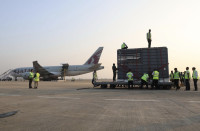
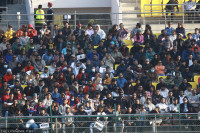


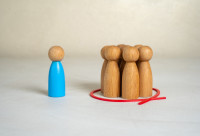
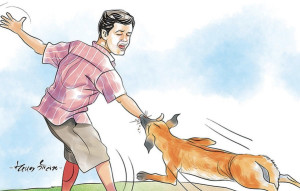


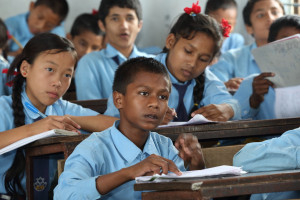
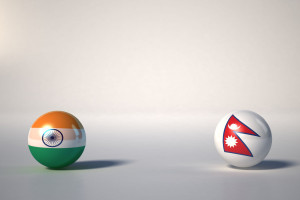


%20(1).jpg&w=300&height=200)

